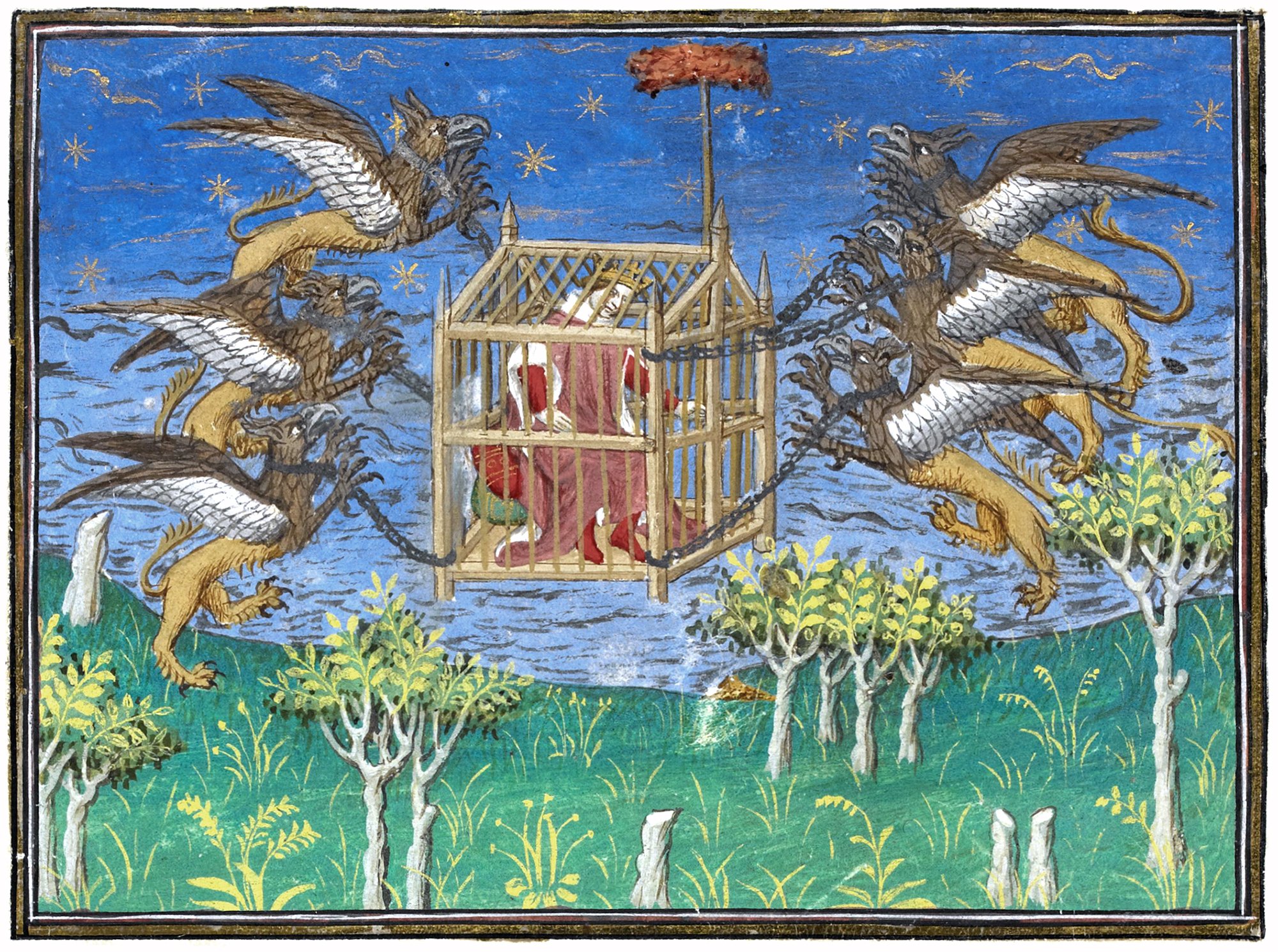Alexander the Great’s Flying Machine
Illustration of Alexander the Great’s Flying machine, consisting of a chair held aloft by a group of griffins. Originally published in The True History of the Good King Alexander, circa 1420.
The oldest myths and legends about human flight usually involve birds and other winged creatures that were already known to fly. These creatures were ready-made-packages of sorts. Harnessing their ability to fly by means of control provided the easiest and quickest path to human flight. Pictured above is one such example of this. It’s a mythical flying machine built by Alexander the Great.
Alexander the Great was the king of the Greek Empire in the fourth century BC. He is best known for his military exploits, but throughout the centuries his legacy has become steeped in myth and legend. One such legend was his desire to ascend to the heavens. As the story goes, he made a machine with a set of gryphons chained to a throne or cage with rods of meat above it. The gryphons flew upward trying to reach the meat, and this lifted the machine off the ground. It’s strikingly similar to the myth of Kay Kāvus, which also uses the beast-and-meat approach to flight. Alexander uses his machine to fly up into the heavens, so high that he could see the entire world. This frightened the king, so he prayed to return to the ground safely. Return he did, and he founded a city upon the spot where he alighted.
The machine and the story are fictional, of course, but the basis for the story is most likely not. Flight has been on the human mind since time immemorial, and Alexander’s curiosity toward the heavens would have been a common occurrence back then. The need to escape the surface of the earth and achieve flight is a primal human need, and the endurance of this and other legends like it is evidence of this need.
Read more about other ideas for flying machines here.
Check out other myths and legends that deal with flight here.

